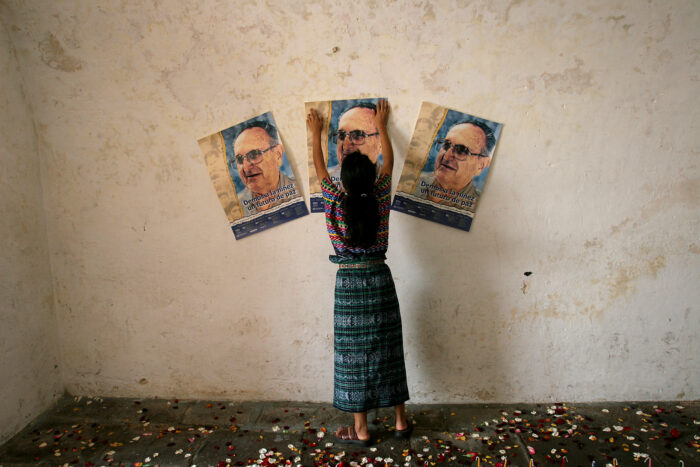When I read “Murder Comes for the Bishop” by Francisco Goldman, I was 22 and in my first year as a journalist. The criminal investigation and the trial following the murder of Bishop Juan Gerardi Conedera contained the whole story of my country: the vices and the virtues of a post-war society.
I immediately wanted to emulate Goldman as a storyteller. Every single detail that amazed me in his story was nothing but the result of deep reporting engaged with the truth, a quest for justice through journalism.
Murder Comes for the Bishop:
Was the most prominent human-rights activist in Guatemala killed by a homosexual lover, a gang of church thieves, or an army hit squad?
By Francisco Goldman
The New Yorker, March 15, 1999
Excerpt
On the afternoon of April 26th last year, a few hours before he was bludgeoned to death in his parish-house garage, Bishop Juan Gerardi Conedera was drinking whiskitos and telling stories at a small gathering in the back-yard garden of a friend’s house. Bishop Gerardi’s stories were amusing and sometimes off-color. He was a chistoso, a joker. “In a meeting with him, you would get this whole repertory of jokes,” Father Mario Orantes Najera, the Bishop’s vice-parish priest, told police investigators two days later. “I wish you could have known him.” Guatemalans admire a man who can tell chistes. A good chiste is a defense against despair and the inner solitude that comes from not being able to speak one’s mind. Guatemalans have long been known for their reserve and secretiveness, even gloominess. “Men remoter than mountains” was how Wallace Stevens put it in a poem he wrote after visiting Guatemala. Two separate, gravely ceremonious, phantasmagoria-prone cultures, Spanish Catholic and Mayan pagan, shaped the country’s national character, along with centuries of cruelty and isolation. In 1885, a Nicaraguan political exile and writer, Enrique Guzman, described the country as a vicious police state, filled with so many government informers that “even the drunks are discreet”—an observation that has never ceased to be quoted because it has never stopped seeming true.




